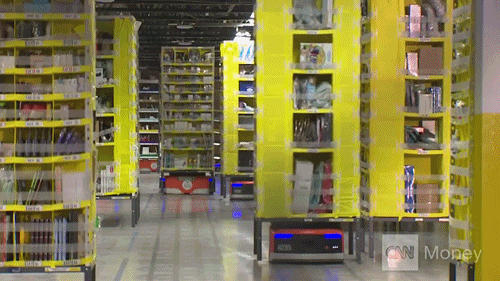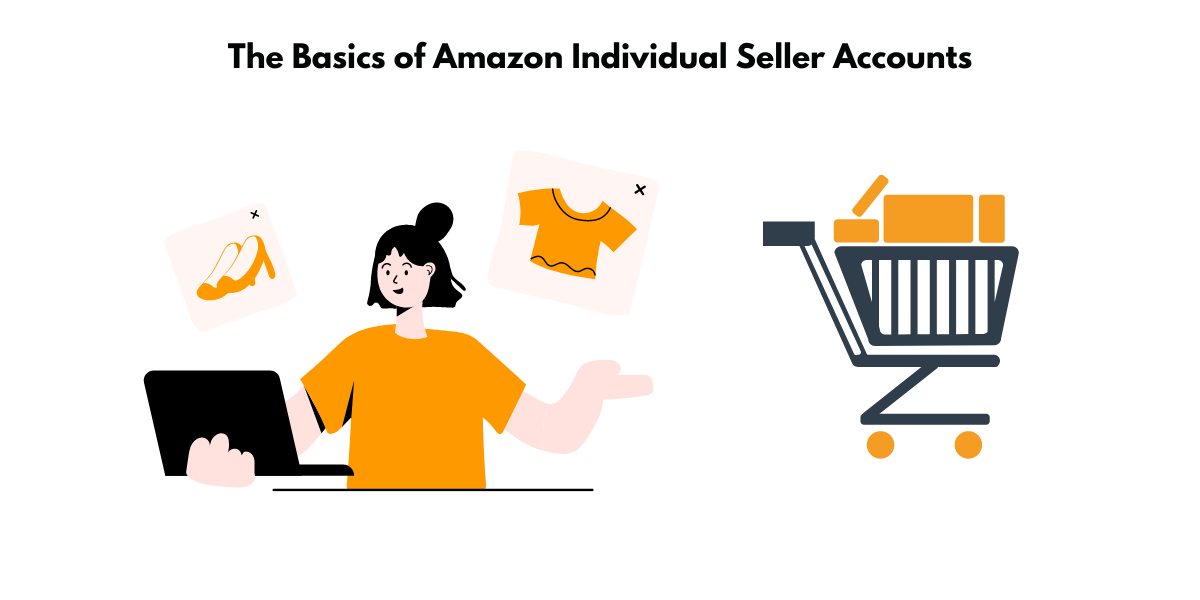Low-Cost Amazon Selling: Thrive as an Individual Seller
Understanding the Basics of Amazon Individual Seller Accounts
The Basics of Amazon Individual Seller Accounts
Getting to grips with how an Amazon Individual Seller Account operates can grant you the freedom to kick-start your selling journey without the pressure of high initial costs. When you opt for this type of account, it’s like dipping your toes in the ocean of e-commerce. There’s no monthly fee; instead, you pay per item sold, which could make it a more manageable option if you’re not expecting to sell high volumes right off the bat. As an individual seller, your sales are limited to 40 items per month, making it a suitable choice if you’re a budding entrepreneur or experimenting with online selling.
Why Amazon Is a Great Platform for Individual Sellers
Amazon is often the go-to platform for individual sellers and there’s little wonder why. Imagine having access to a vast customer base that already trusts the storefront – it’s like setting up shop in the busiest part of town without the hefty rent. For individual sellers, this is a game-changer because Amazon’s credibility becomes your credibility. Their advanced tools, such as detailed analytics and targeted advertising, are available at a fraction of the cost you might encounter elsewhere. This means more opportunities for growth, even if you’re operating with a smaller inventory or have a limited e-commerce budget.

Crafting Your Amazon Success Story
Key Steps to Getting Started with an Individual Seller Account
Embarking on your Amazon selling journey begins with setting up your individual seller account, and while it’s quite straightforward, attention to detail is key. Here are the pivotal steps you’ll need to follow:
- Visit Amazon Seller Central and hit the ‘Start Selling’ button to enter the realm of Amazon sellers.
- Use your current Amazon credentials or create a new shiny account dedicated to your business endeavors.
- Submit key information—this includes your business name, address, and contact info. It’s the virtual version of hanging your name above the shop door.
- Your banking details are next in line; these are critical for the grand moment when you’ll start receiving payments for your sales.
- A nod of approval to terms and conditions is a must – it’s the digital handshake with Amazon on your partnership.
- Lastly, prove that you are who you say you are by verifying your identity using the various methods provided by Amazon.
By moving through these steps with care, you’re laying a solid foundation for your online selling business.
Navigating the Sign-Up Process and Account Approval
Navigating the sign-up process is like starting a new game where you’re about to level up—exciting but requires focus. You’ll start by venturing over to Amazon’s website and finding the ‘Sell’ tab. Think of it as the path that leads to the marketplace. Here, you’ll step into the world of Amazon selling by entering your details and selecting the Individual Seller option.
Verification of your email and phone number follows, and think of this as setting up your stall with care—it’s an essential step to ensure security and communication flow. They’ll then ask for identification to make sure your stall is legitimate in this crowded marketplace.
Once you’ve listed your first product, Amazon often reviews the information before giving the thumbs up. They’re ensuring all sellers meet their high standards—it’s like the quality inspection before the marketplace gates open.

Finding the Perfect Product to Sell
Conducting Market Research to Identify Demand
Focus on these key aspects while doing your research:
- Sales Data: Look for products that have steady and robust sales, indicating a healthy demand.
- Customer Reviews: Delve into what customers are saying—their likes and dislikes could point to a gap you could fill.
- Competition Analysis: Keep an eye on the number of sellers splashing around in your prospective product pond. If there are too many fish, it might be harder to get noticed.
Tips on Choosing High-Profit Potential Items
When you’re on the hunt for items that could potentially fill your pockets, consider products that check these essential boxes:
- Low Competition, High Demand: Look for that sweet spot where an item is sought-after but doesn’t have too many sellers. This gives you a clear runway to take off.
- Good Margin Space: Ensure the cost to source or produce isn’t nipping too closely at your sales price. Think of margin as your breathing room – the more, the healthier your business will be.
- Lightweight and Small: Steer clear of bulky and heavy items to avoid hefty shipping costs. Light and compact is the way to go – they’re like the nimble racers of the product world.
- Not Seasonal: Opt for products that people need year-round, ensuring a steady flow of sales rather than a once-a-year waterfall.
- Limited Regulations: Stay away from items that come with a thick book of regulations. The easier it is to get your product to market, the faster you start selling.
Remember, high-profit potential items are not about a quick win; they’re about strategic selection for long-term success.
Listing Products Like a Pro
Creating Compelling Product Detail Pages
Crafting a product detail page that captures attention and converts browsers into buyers is an art form. Start with a title that is clear and engaging, following Amazon’s 200-character limit rule, and capitalizing the first letter of every word to make it pop. Paint a picture with crisp, high-quality images—Amazon recommends 500 x 500 or 1,000 x 1,000 pixels to display your product in its best light.
When it comes to the bullet points, these are your highlights, your product’s chance to shine. Focus on key features and benefits that tell a dazzling story about why your product is a must-have. Use variations thoughtfully to guide customers to their preferred color, size, or other customizable features.
Remember, the “Buy Box” is the ultimate goal—it’s where you want to end up, so ensure your offer stands out with competitive pricing and stellar customer service.
Leveraging Amazon’s Tools for Enhancing Visibility
Boosting your product’s visibility on Amazon is like turning on a spotlight in a crowded room. Make the most of Amazon’s suite of tools to amplify your presence. For starters, Amazon SEO is your first ally—by seamlessly integrating relevant keywords into your title, bullets, and description, you orient the algorithm compass to point toward your products.
Are you part of the Amazon Brand Registry? If so, make use of Amazon Stores to unfold your brand’s story across multiple pages—think of it as an exclusive showroom within the Amazon mall. Dive into the analytics to understand traffic sources and tailor your approach for precision targeting.

Managing Orders and Customer Satisfaction
The Importance of Efficient Order Management
Using an order management system is like having an efficient assistant who never sleeps. They ensure your inventory is synced across all channels, making over-selling as obsolete as yesterday’s news. Fast and accurate fulfillment not only keeps customers smiling, but it also speaks volumes to Amazon’s algorithm, giving you a leg up in the race toward the coveted Buy Box. Don’t forget, that prompt and precise handling of orders is a stepping stone to collecting that stellar feedback, which is as good as gold in e-commerce.
Providing Excellent Customer Service as a Growth Strategy
Providing top-notch customer service is a silent salesman that word-of-mouth marketing cannot beat. When a customer reaches out, be it for a question or a concern, treat their inquiry with the urgency of a VIP guest—because that’s precisely what they are. Responding promptly and resolving issues swiftly not only builds a bridge of trust but also paves the way for glowing reviews and heart-warming recommendations.
Keep the conversation friendly and personable, as if you’re helping a neighbor. This ensures customers feel valued and understood. And for those trickier situations that may arise, having a flexible return policy acts as a safety net, offering peace of mind to shoppers on the fence about a purchase. When they see a commitment to service excellence, customers feel confident in not just buying but coming back for more.
Overcoming the Challenges of Individual Selling
Handling Common Obstacles Faced by New Sellers
New sellers often need to navigate a maze of obstacles that could be more like a series of mini-adventures. The most common challenge? Standing out in the vast Amazon marketplace—it’s akin to being heard at a rock concert. You’ve got to make your listings sing by optimizing for Amazon’s search engine and investing in quality product photography. Think SEO and visuals that stop scrolling thumbs in their tracks.
Inventory management is another hurdle. Strike a balance between too much (where storage costs pile up) and too little (risking stockouts and the wrath of impatient customers). Use Amazon’s inventory reports to stay sharp and keep your stock in check.
And as you’re dancing through this e-commerce waltz, pricing can often trip you up. Be agile and responsive to the market; remember, pricing isn’t set in stone. Adjust as you learn the rhythm.
Facing these challenges head-on with determination and the right strategies will set you up for a successful journey on Amazon’s stage.
Strategies for Staying Competitive Against Larger Brands
Staying competitive against the big players is like being the nimble David in a field of Goliaths—it’s all about using your agility to your advantage. To hold your ground, you’ve got to focus on carving out a unique selling point (USP). Maybe your products are locally sourced, handcrafted, or come with a personal touch that mass-produced items can’t offer.
Customer service is your secret weapon. Larger brands can’t always offer that personable interaction, so take the time to know your customers, address their needs promptly, and tailor the shopping experience to them. It’s like being the friendly neighborhood shop that everyone loves.
And don’t forget about the power of community. Engage with your customers on social media, gather their input, and build a loyal following based on shared values. It’s like hosting a block party that the whole neighborhood is talking about.

Utilizing Fulfillment Methods to Your Advantage
Deciding Between Fulfillment by Amazon (FBA) and Merchant Fulfillment
Deciding between Fulfillment by Amazon (FBA) and Merchant Fulfillment (FBM) is a critical choice that can steer your business in different directions. FBA is like having a team of experts take the wheel for logistics. You send your products to Amazon’s warehouse, and they handle the storage, packing, shipping, and customer service. It’s excellent for scalability and if you yearn to see “Prime” next to your products, enhancing their appeal.
On the other hand, FBM puts you in the driver’s seat. You store your own goods, and when an order comes through, you pack and ship it yourself. It can keep costs down if storage fees send shivers down your spine or if you’re selling items that are bulky or unusual. However, with great power comes great responsibility—customer service and returns are on you.
Consider factors like sales volume, control over inventory, and willingness to deal with logistics before choosing your path.
Weighing the Pros and Cons of Different Shipping Options
Choosing the right shipping option is like picking a travel route: each has its own set of pros and cons. When weighing different shipping options for your Amazon products, factor in the product’s size, weight, and how quickly it needs to reach your customer’s doorstep.
For instance, if you’re selling small, lightweight items, shipping via standard carriers might be cost-effective. However, they might not be as fast as expedited shipping options, which could make a world of difference to a customer in need of a last-minute gift.
On the flip side, expedited options like Amazon Prime can lead to delighted customers and glowing reviews but do incur higher costs. You’d need to ensure your price can absorb these costs without slimming down your margins too much.
Taking a blended approach with some products on FBA for prime-eligible speed and others on FBM for more control can sometimes provide the perfect balance.

Conclusion
Selling on Amazon as an individual seller presents a unique opportunity for entrepreneurs to tap into a vast market with no monthly subscription fees, making it ideal for those just starting or with a smaller inventory. Navigating Amazon’s Seller Central, setting up payment and tax information, and creating compelling product listings are essential steps to effectively launch and sell products on this platform.
With the ability to leverage tools like Amazon PPC to boost visibility and sales, individual sellers can successfully grow their business and reach a broad audience on one of the world’s largest e-commerce sites.
- Low-Cost Amazon Selling: Thrive as an Individual Seller - August 28, 2024
- Is it more economical to use warehouse space for rent or use third-party logistics for your business? - November 29, 2022
- Business And Logistics: What Does Supply Chain Management Mean? - March 6, 2022


